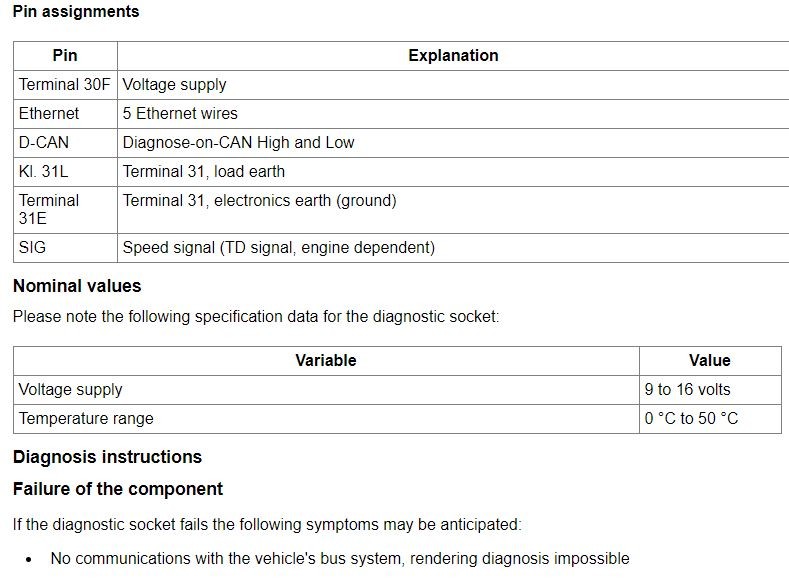The OBD2 port is crucial for diagnosing car problems. When there’s no power at the OBD2 port, it can be frustrating. This guide will help you troubleshoot and resolve this issue. One possible cause, though less common, is a previous owner disabling the port power to deter theft.
Firstly, check fuse 12 in the Front Electronics Module (FEM) located in the passenger A-pillar area. This fuse controls power to the OBD2 port. However, a blown fuse 12 would also affect the DSC and HVAC systems. If those are working, the fuse is likely fine.
The OBD2 port requires battery voltage (Terminal 30F), load earth (Terminal 31L), and electronics earth (Terminal 31E). Battery voltage is essential for powering external scan tools. Use a multimeter to check for these voltages at the diagnostic socket.
A terminating resistor (approximately 120 ohms) connects Pin 6 and Pin 14 (CAN diagnosis). Pin 9 carries the engine speed signal (engine-dependent). An Ethernet connection requires 5 pins, indicating potential issues beyond just power, such as a faulty socket or resistor.
Thoroughly inspect the wiring harness from the OBD2 port to the FEM for breaks or shorts using the multimeter. Check for continuity and resistance along the wire path.
If the wiring and fuse check out, verify power and ground at the FEM itself. Look for any other car problems that might share a common cause with the OBD2 power issue. Operating all the car’s systems might reveal related malfunctions. Sometimes driving the car and using all its features can trigger a fault and help pinpoint the problem. Remember, a successful diagnosis often involves a systematic approach and careful inspection.

